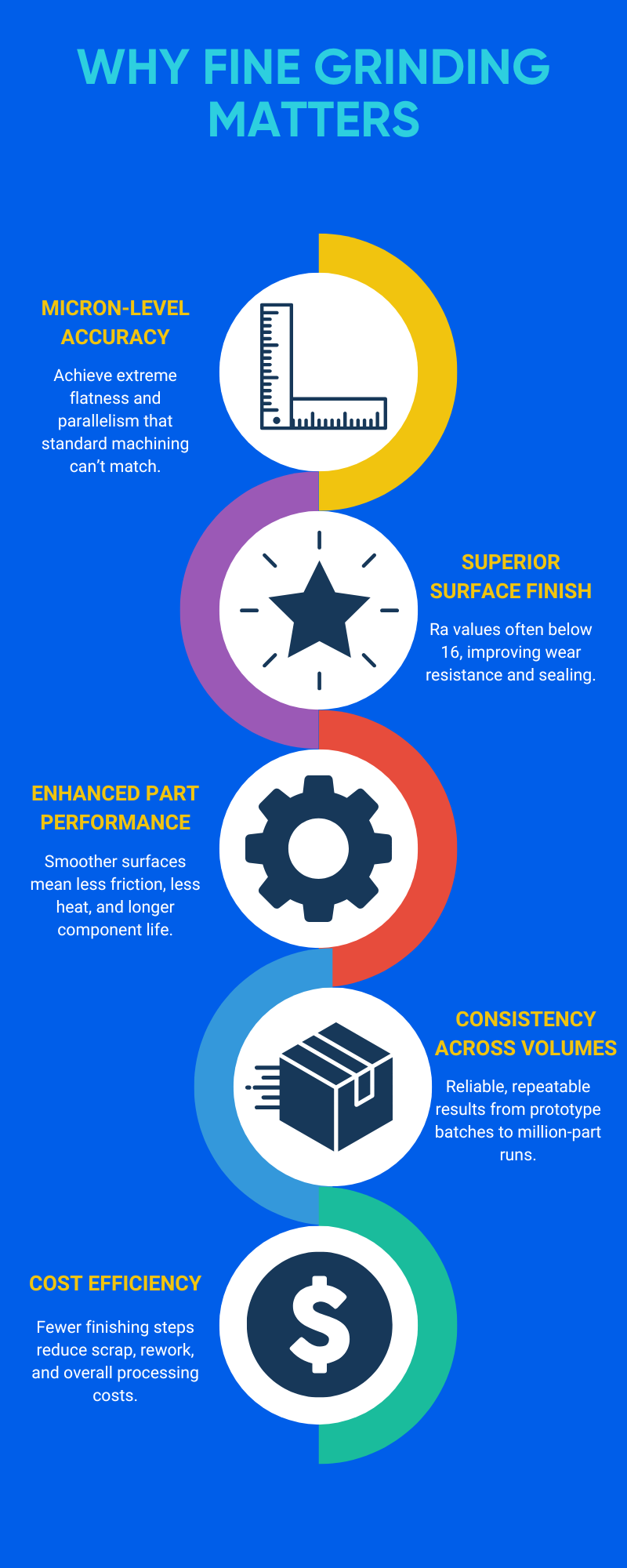
Why Fine Grinding Matters?
Fine grinding is essential for applications that demand:
Tight dimensional tolerances (±1-5 microns)
Fine grinding enables precise control over part dimensions, achieving tolerances within a few microns. This is critical in industries where even the slightest deviation can affect performance, such as aerospace, medical, and semiconductor manufacturing.
Excellent flatness and parallelism
Achieving near-perfect flatness and parallelism ensures optimal assembly, sealing, and mechanical fit. Fine grinding eliminates warping or surface unevenness, making it ideal for components that require tight geometric alignment.
High surface finish quality (up to 1 Ra uin)
The process delivers ultra-smooth surfaces with finishes as fine as 1 Ra microinch, reducing friction, improving wear resistance, and enhancing aesthetics. This level of finish is especially important for sealing surfaces or optical components.
Consistency across large production volumes
Fine grinding provides repeatable results across high-volume manufacturing, maintaining quality and accuracy part after part. It’s an efficient solution for scalable production without compromising precision.





